Scope:
I am developing a C# aplication to simulate queries into this site. I am quite familiar with simulating web requests for achieving the same human steps, but using code instead.
If you want to try yourself, just type this number into the CNPJ box:
08775724000119 and write the captcha and click on Confirmar
I've dealed with the captcha already, so it's not a problem anymore.
Problem:
As soon as i execute the POST request for a "CNPJ", a exception is thrown:
The remote server returned an error: (403) Forbidden.
Fiddler Debugger Output:
This is the request generated by my browser, not by my code
POST https://www.sefaz.rr.gov.br/sintegra/servlet/hwsintco HTTP/1.1
Host: www.sefaz.rr.gov.br
Connection: keep-alive
Content-Length: 208
Cache-Control: max-age=0
Origin: https://www.sefaz.rr.gov.br
User-Agent: Mozilla/5.0 (Windows NT 6.1; WOW64) AppleWebKit/537.11 (KHTML, like Gecko) Chrome/23.0.1271.97 Safari/537.11
Content-Type: application/x-www-form-urlencoded
Accept: text/html,application/xhtml+xml,application/xml;q=0.9,*/*;q=0.8
Referer: https://www.sefaz.rr.gov.br/sintegra/servlet/hwsintco
Accept-Encoding: gzip,deflate,sdch
Accept-Language: pt-BR,pt;q=0.8,en-US;q=0.6,en;q=0.4
Accept-Charset: ISO-8859-1,utf-8;q=0.7,*;q=0.3
Cookie: GX_SESSION_ID=gGUYxyut5XRAijm0Fx9ou7WnXbVGuUYoYTIKtnDydVM%3D; JSESSIONID=OVuuMFCgQv9k2b3fGyHjSZ9a.undefined
// PostData :
_EventName=E%27CONFIRMAR%27.&_EventGridId=&_EventRowId=&_MSG=&_CONINSEST=&_CONINSESTG=08775724000119&cfield=rice&_VALIDATIONRESULT=1&BUTTON1=Confirmar&sCallerURL=http%3A%2F%2Fwww.sintegra.gov.br%2Fnew_bv.html
Code samples and References used:
I'm using a self developed library to handle/wrap the Post and Get requests.
The request object has the same parameters (Host,Origin, Referer, Cookies..) as the one issued by the browser (logged my fiddler up here).
I've also managed to set the ServicePointValidator of certificates by using:
ServicePointManager.ServerCertificateValidationCallback =
new RemoteCertificateValidationCallback (delegate { return true; });
After all that configuration, i stil getting the forbidden exception.
Here is how i simulate the request and the exception is thrown
try
{
this.Referer = Consts.REFERER;
// PARAMETERS: URL, POST DATA, ThrownException (bool)
response = Post (Consts.QUERYURL, postData, true);
}
catch (Exception ex)
{
string s = ex.Message;
}
Thanks in advance for any help / solution to my problem
Update 1:
I was missing the request for the homepage, which generates cookies (Thanks @W0lf for pointing me that out)
Now there's another weird thing. Fiddler is not showing my Cookies on the request, but here they are :
